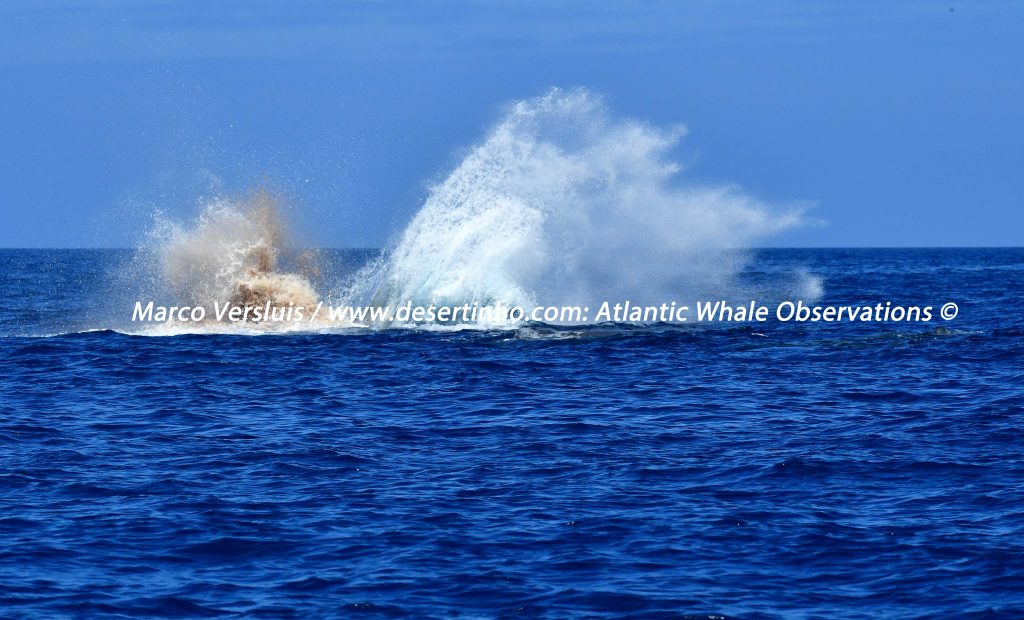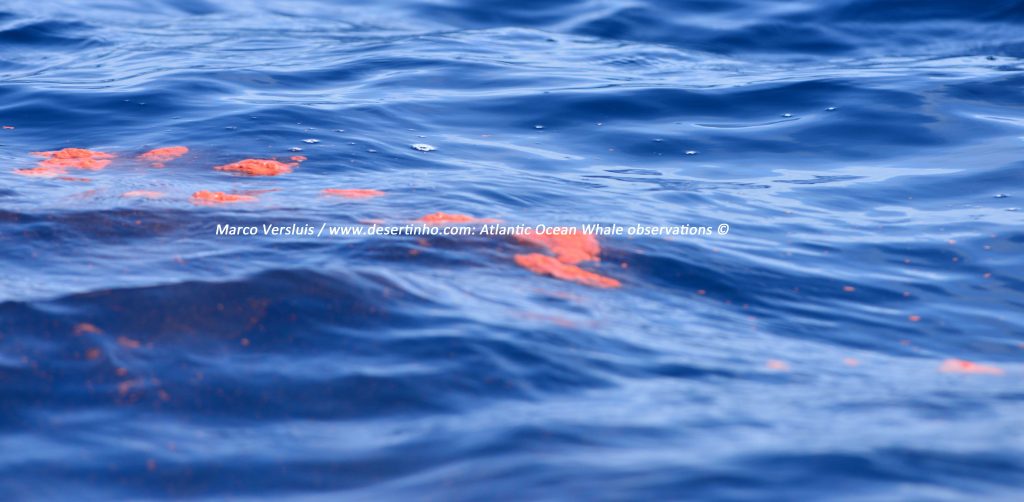Desertinho Atlantic Ocean – Global warming reduction starts by saving whales and so their poo!
First of all it’s important you watch the short video about How whales change our climate which explains you why whales are that important for the Oceans ecosystems and especially their whale poo or so called whale feces. In the early 1900 hundreds human wiped out almost 90% of all whales in the Oceans and so they also “wiped” out the whale poo as well. What human did not know, by now, is that whale poo is so important for all live in the Oceans.
In other words, whale poo even affects global warming. So the question is how important the connection is between fewer whales, less whale poo, and global warming and this video tells you briefly this lifecycle. Beside whale poo the so called Oceanic spring bloom is crucial for all live in the Oceans and the Oceanic spring bloom is followed by all whale species from south to North pole and vice versa. The Oceanic spring bloom ensures lots of minerals and so nutrients are coming into the Oceans.
Finally, half of the photosynthesis on our planet occurs in the Oceans, converting lots of the global-warming atmospheric carbon dioxide into plant-based carbon. All this growth happens near the water surface, where there is sunlight. This process is the so called aquatic carbon cycle. The combination of the Oceanic spring bloom and whale poo is the perfect match for all live in the Oceans.
The photos below shows you images of a pooing Sperm whale (photo 1) and Blue whale poo (photo 2). The first photo is a very spectacular one because it’s really rare to see a Sperm whale pooing / defecating like this! You may notice, because of these photos, that their poo is really different in colour and this is because the food they are feeding on. The Sperm whale mainly feeds on (Giant) squid and the Blue whale mainly feeds on krill.


Desertinho Atlantic Ocean – Het terugdringen van de opwarming van de aarde start bij het beschermen van walvissen vanwege hun poep!
Om te beginnen is het belangrijk om de video “How whales change our climate” te bekijken welke precies uitlegt waarom walvissen zo belangrijk zijn voor de ecosystemen van de Oceanen en waarom juist walvispoep hierin een cruciale rol speelt. In de vorige eeuw heeft de mens bijna 90% van alle walvissen uitgeroeid en daarmee heeft dit een direct effect gehad op uit het verdwijnen van 90% van alle walvispoep. Wat mensen niet wisten, en nu gelukkig wel, is dat walvispoep een cruciale rol speelt in de ecosystemen van de Oceanen. Sterker nog, walvispoep heeft direct verband met de opwarming van de aarde!
De vraag is nu wat de connectie is tussen minder walvissen, minder walvispoep, en de opwarming van de aarde. De video laat in 5 minuten zien wat deze connectie is. Naast walvispoep is de Oceanische lente bloei van cruciaal belang voor het leven in de Oceanen. Walvissen volgen de Oceanische lente bloei van Noord naar Zuid pool en omgekeerd. De Oceanische lente bloei zorgt er mede voor dat er mineralen en voedingstoffen terecht komen in de Oceanen en omdat meer dan de helft van alle fotosynthese op aarde plaats vindt in de Oceanen zorgen de Oceanen ervoor dat koolstof dioxide wordt omgezet in zuurstof.
Dit proces wordt de aquatische koolstof cyclus genoemd en vindt plaats aan het wateroppervlak waar zonlicht door heen komt. Tot slot, de combinatie van walvispoep en Oceanische lente bloei is de perfecte combinatie voor al het leven in de Oceanen.
Op de foto’s hierboven zie je een “poepende” Potvis (foto 1) en de poep van een Blauwe vinvis (foto 2). De foto van de “poepende” Potvis is een hele bijzondere omdat het zeldzaam is om dit te zien en vooral op deze manier! Aan de kleur van de poep op beide foto’s kun je goed zien dat beide walvissen een heel ander voedsel patroon hebben. Potvissen eten alleen maar (reuzen) inktvis en de blauwe vinvis eet bijna alleen maar krill.